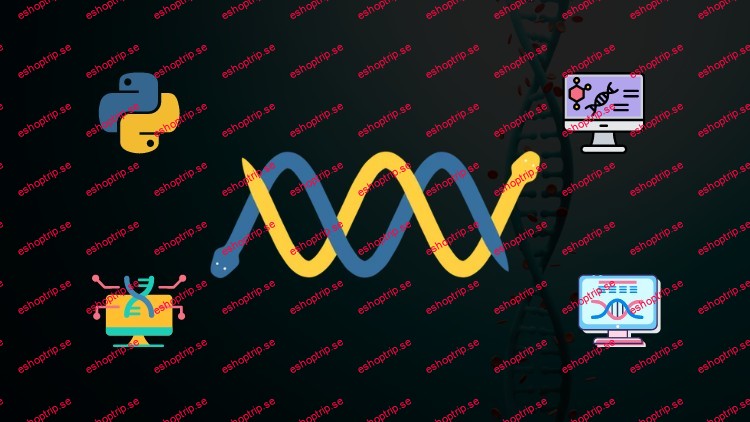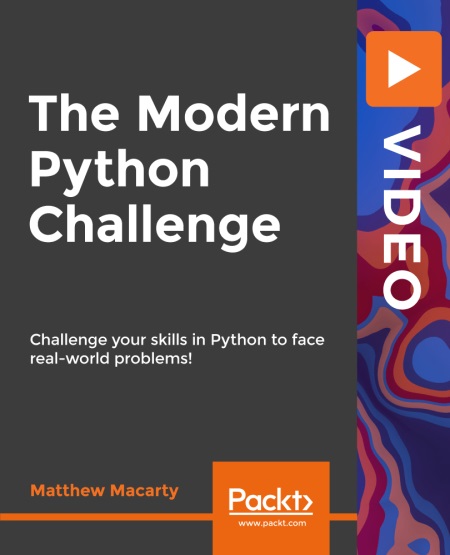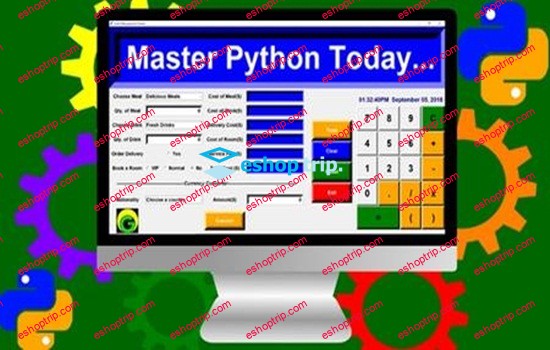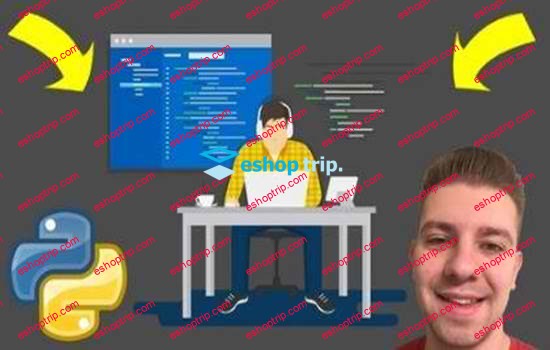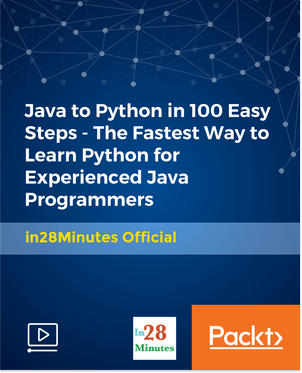Published 7/2024
Created by Abdul Rehman Ikram
MP4 | Video: h264, 1280×720 | Audio: AAC, 44.1 KHz, 2 Ch
Genre: eLearning | Language: English | Duration: 18 Lectures ( 2h 12m ) | Size: 1.18 GB
Master Biopython: Bioinformatics Data Analysis with Sequence Alignment, BLAST Searches, Genome Analysis and much more
What you’ll learn:
Understand the Basics of Biopython: Gain a foundational understanding of what Biopython is and its importance in bioinformatics.
Install and Set Up Biopython: Install Biopython and set up the necessary coding environment, including Jupyter Notebook.
Navigate and Utilize Key Biopython Modules: Identify and use important Biopython modules for various bioinformatics tasks.
Perform Sequence Parsing and Analysis: Parse and analyze DNA, RNA, and protein sequences using Biopython.
Conduct Quality Control on Sequencing Data: Assess the quality of sequencing reads and filter them based on quality scores.
Access Biological Databases: Retrieve biological data from online databases such as NCBI using Biopython.
Perform Sequence Alignment: Execute pairwise and multiple sequence alignments to compare biological sequences.
Execute BLAST Searches: Perform BLAST searches and interpret the results to find sequence similarities.
Analyze Genomic Data: Parse and analyze genomic data from formats such as GenBank files.
Visualize Biological Data: Create visualizations like plots and charts to represent biological data effectively.
Work with FASTQ Files: Index, sort, and perform quality filtering on FASTQ files.
Manipulate FASTA Files: Sort sequences in FASTA files and perform various operations on them.
Identify and Analyze Motifs: Detect and analyze sequence motifs using Biopython.
Understand and Apply COVID-19 Data Analysis: Conduct BLAST searches and visualize COVID-19 protein structures.
Develop Comprehensive Bioinformatics Pipelines: Integrate multiple Biopython functionalities to build end-to-end bioinformatics pipelines.
Plot Sequence Length and GC Content: Generate plots to analyze sequence length and GC content distributions.
Download and Use Biological Data: Fetch sequences by accession numbers and save them in desired formats.
Handle Errors and Exceptions: Manage and troubleshoot common errors encountered during bioinformatics analyses.
Document and Comment Code: Write clear and well-documented code with appropriate comments for reproducibility.
Apply Bioinformatics Skills to Real-world Data: Utilize Biopython skills to analyze real biological datasets and draw meaningful conclusions.
Comprehensive Skill Development: Learners will gain a broad range of skills, from basic sequence parsing and alignment to advanced genome analysis
Hands-On Experience: The course emphasizes practical, hands-on experience, allowing learners to apply what they learn to real biological datasets.
Flexible Learning: Designed to accommodate various levels of prior knowledge, the course is accessible to beginners.
Requirements:
Basic Understanding of Biology
Fundamental Programming Knowledge
Basic Command Line Skills
Computer with Internet Access
Installation of Required Software
Motivation and Curiosity
No Prior Experience Needed
Description:
Master Biopython: Comprehensive Guide to Bioinformatics Data AnalysisWelcome to the ultimate Biopython course, where you’ll embark on a transformative journey into the world of bioinformatics! This comprehensive guide is meticulously designed to equip you with the essential skills and knowledge to analyze and interpret biological data using Biopython. Whether you’re a beginner or an experienced professional, this course offers something for everyone.What You Will Learn:Introduction to Biopython: Get a solid foundation in Biopython and understand its significance in bioinformatics.Setting Up Your Environment: Learn how to install and configure Python, Jupyter Notebook, and Biopython for seamless data analysis.Key Biopython Modules: Explore important modules and their functionalities, crucial for bioinformatics tasks.Sequence Parsing and Analysis: Dive into parsing and analyzing DNA, RNA, and protein sequences using Biopython.Quality Control: Conduct quality assessments on sequencing reads and filter them based on quality scores.Accessing Biological Databases: Fetch biological data from online databases like NCBI using Biopython.Sequence Alignment: Perform pairwise and multiple sequence alignments to compare biological sequences.BLAST Searches: Execute BLAST searches and interpret results to find sequence similarities.Genomic Data Analysis: Parse and analyze genomic data from formats like GenBank files.Data Visualization: Create visualizations such as plots and charts to effectively represent biological data.Working with FASTQ and FASTA Files: Index, sort, and filter sequences in FASTQ and FASTA files.Motif Analysis: Identify and analyze sequence motifs using Biopython.COVID-19 Data Analysis: Conduct BLAST searches and visualize COVID-19 protein structures.Bioinformatics Pipelines: Integrate multiple Biopython functionalities to build end-to-end bioinformatics pipelines.Real-world Applications: Apply Biopython skills to real biological datasets and draw meaningful conclusions.Who Should Enroll:Biologists and Life Scientists: Enhance your data analysis skills for large-scale biological data.Bioinformatics Students and Researchers: Gain practical experience with essential bioinformatics tools.Computer Science and IT Professionals: Apply your programming skills to the exciting field of bioinformatics.Healthcare Professionals: Understand the computational aspects of genomics and personalized medicine.Educators and Academics: Integrate Biopython into your curriculum and enhance your teaching resources.Enthusiastic Beginners: Start from scratch and build a strong foundation in bioinformatics.Data Analysts and Statisticians: Expand your expertise to include biological data analysis.Why This Course:Hands-On Learning: Emphasis on practical, real-world applications and hands-on projects.Comprehensive Coverage: From basic concepts to advanced techniques, this course covers it all.Flexible and Accessible: Designed for learners of all levels, with step-by-step guidance and support.Industry-Relevant Skills: Equip yourself with skills that are in high demand in the bioinformatics industry.Requirements:Basic Understanding of Biology: Familiarity with DNA, RNA, and proteins.Fundamental Programming Knowledge: Basic knowledge of Python programming.Basic Command Line Skills: Familiarity with using the command line interface (CLI) is helpful but not mandatory.Computer with Internet Access: For downloading datasets, installing software, and accessing online resources.Motivation and Curiosity: A strong motivation to learn and explore bioinformatics.Enroll now and take the first step towards mastering Biopython and revolutionizing your approach to biological data analysis! Whether you aim to enhance your research, advance your career, or simply explore the fascinating world of bioinformatics, this course is your gateway to success. Join a community of learners and start your journey today!
Who this course is for:
Researchers and professionals in the fields of biology, genetics, microbiology, and biotechnology who want to leverage computational tools for their research.
Individuals seeking to enhance their data analysis skills to handle large-scale biological data.
Undergraduate and graduate students pursuing degrees in bioinformatics, computational biology, or related fields.
Researchers who need to analyze genomic data, perform sequence alignments, and access biological databases.
Software developers, data scientists, and IT professionals interested in applying their programming skills to the field of bioinformatics.
Individuals looking to transition into the bioinformatics domain and understand its applications and challenges.
Medical researchers, clinicians, and healthcare professionals who want to understand the computational aspects of genomics and personalized medicine.
Individuals involved in clinical research and diagnostics who need to analyze genomic data.
Professors, lecturers, and instructors teaching courses in bioinformatics, computational biology, or related subjects.
Academic professionals looking for a comprehensive resource to integrate Biopython into their curriculum.
Individuals with a keen interest in bioinformatics who may not have a formal background in biology or programming but are eager to learn.
Hobbyists and self-learners who want to explore the intersection of biology and computing.
Professionals in data analysis and statistics who wish to expand their expertise to include biological data analysis.
Individuals interested in applying statistical methods to genomic data and biological research.
Homepage
